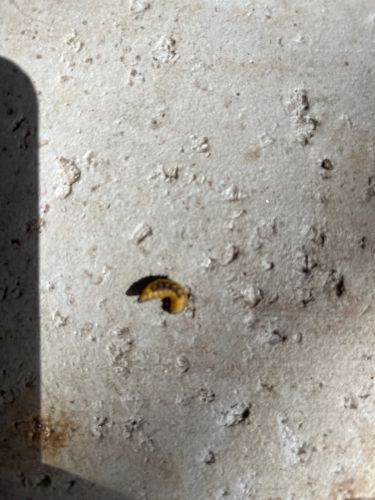White Grub (possibly June Beetle or May Beetle larva)
Scientific Name: Various species within the family Scarabaeidae, such as Phyllophaga spp. (June beetles/May beetles), Popillia japonica (Japanese beetle), or Cyclocephala spp. (Masked chafers). Specific identification without more detail is difficult.
Order & Family: Order: Coleoptera, Family: Scarabaeidae
Size: Typically 1.5 cm to 4 cm (0.6 to 1.6 inches) in length, depending on the species and larval instar.

Natural Habitat
Typically found underground in soil, particularly in lawns, pastures, gardens, and agricultural fields where they feed on plant roots.
Diet & Feeding
Primarily feed on the roots of grasses, crops, and other plants. They are significant agricultural and lawn pests.
Behavior Patterns
Larvae develop in the soil, feeding on roots. They are often found in lawns and gardens, especially in areas with thatch and moisture. The C-shape is characteristic of many scarab beetle larvae when at rest or disturbed. They move slowly through the soil.
Risks & Benefits
Risks: White grubs are significant pests of lawns, golf courses, and agricultural crops. Their root feeding can cause widespread damage, leading to brown patches in lawns, wilting plants, and reduced crop yields. Benefits: As decomposers of organic matter in the soil, they play a minor role in nutrient cycling, but their pest status far outweighs this benefit in cultivated areas.
Identified on: 8/21/2025